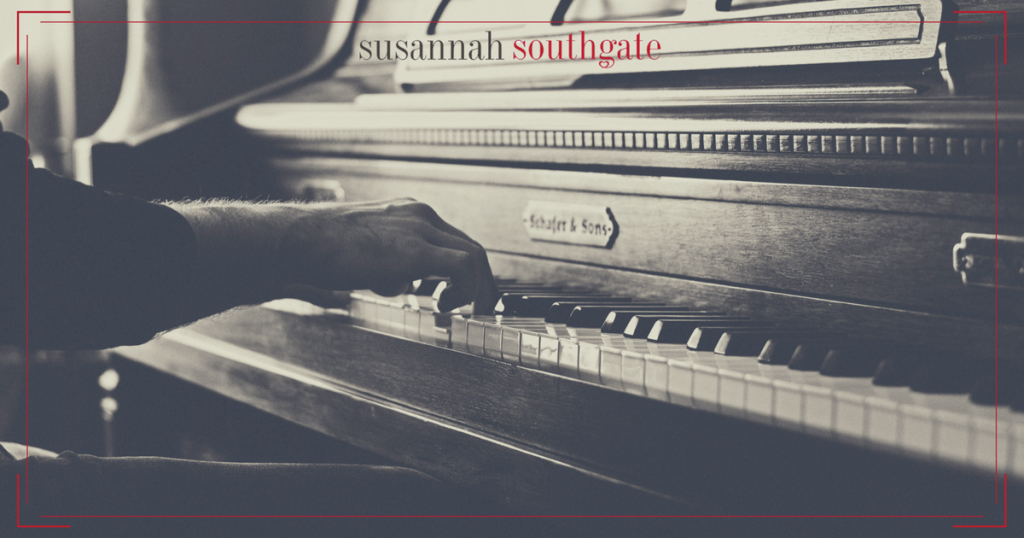This week I watched an amazing video about a man learning to ride a specially designed bike (CLICK TO WATCH: The Backwards Brain Bicycle). The bike looks like any usual bike except for the fact that when you turn the handlebars to the right the bike turns left, and when you turn the bars to the left, the bike turns right.
The video is about how long it took him to learn to ride this bike. And, forgive me for the spoiler, but the amazing part is that it took him eight months of daily practice until his brain finally got it and he could ride the bike.
I love this video because it shows so potently the truth that neuroscience has been increasingly telling us – that our brains only learn by practising and practising. We simply can’t expect to undo old habits and behaviours and ingrain new ones overnight. It is akin to thinking our bodies can radically change by one visit to the gym.
Most of us know we can’t change our behaviour without changing our beliefs. The man learning to ride the new bike couldn’t learn because his old way of thinking about bike riding was so ingrained. Equally, if I fundamentally believe that I am a failure and life is out to get me, it will be desperately hard for me to truly motivate myself into any sustained action that would support the flourishing of my life.
What we practise, so we live.
What is sobering to realize is how much of what we practise is created from deeply practised, yet unconscious, thinking and beliefs. Beliefs that we are not aware we are practising but are then unconsciously forming our choices and actions.
This kind of unconscious thinking leads to habituated behaviours that are practised over and over again, forging, in neuroscience terms, deeper and deeper neural pathways that keep us in loops that unconsciously create our living.
Transforming ourselves requires we understand ourselves better.
And, part of the journey to self-knowing includes bringing to consciousness the thinking that is literally having our brains get stuck in grooves that no longer serve us.
Crucial to understanding ourselves (or our clients) is to excavate what I call our World-view, or Philosophy of Life, that is unconsciously informing our more conscious thinking and behaviour. The raw, un-surfaced beliefs, that lie at the foundation of our living, often completely unconsciously.
Previously included in my world-view was a core belief that “Life is hard and you are on your own”. You can probably imagine what kind of behaviours would stem out of this belief. And, for all the awareness I have brought to this way of holding life, the groove of this thinking is so deeply etched in my wiring, I still on occasion have to catch myself from falling into choices and behaviours that remain committed to this old way of thinking.
 How do you, or your clients, really see the world?
How do you, or your clients, really see the world?
Do you see the world as innately benevolent or treacherous? Do you inherently feel supported in life or do you know deep down that you are on your own? Do you believe yourself to be worthy of love or essentially unlovable?
Few of us, without some help, are really aware of the foundational lens that we actually look at life through. It takes gentle looking and a compassionate gaze to really dig into, and uncover, these kinds of beliefs about Life that usually got formed when we were really young.
But if we fail to unearth them, everything that we may be trying to create to allow for deeper fulfilment or meaning in our adult lives, careers and relationships will ultimately (and seemingly inexplicably) be sabotaged.
So, what hope is there? Masses!
The neuroplasticity of the brain, the very malleability that forged those previous pathways in the past, can equally work in our favour. “Neurons that fire together, wire together” – Rick Hanson.
We can choose to believe, think and do anything. It really is up to us and only us whether our thoughts and beliefs support or sabotage that which we want most. But, just like learning to ride any kind of bike, it takes practice to really believe, trust and live these new beliefs, thoughts and acts.
Just like going to the gym to change our body shape, it is magical thinking to imagine it will happen over night. We need to consistently and frequently catch our habituated ways of thinking and choose to think and act differently.
But watch the bike video and be inspired. Because, after what may have felt like months of futile practice to the person learning to ride the bike, his perseverance pays off and his bike riding is transformed.
Most change requires us to first become aware of what we seek to change.
The next step is to choose something different. The third is to take actions to support that new decision. And the final, too often omitted, step is to stay committed to the practice.
Here’s a very simple transformational tool I use with clients to support this kind of change.
Four Steps to Change:
1. First, start noticing what you are unconsciously practising and thinking. Ask yourself what beliefs do you have about yourself, life, and others, that support this particular piece of unconscious behaviour?
2. Seek to cultivate a compassionate inner observer that can better notice the ingrained thinking patterns – especially the ones that are not serving your hopes, goals and longings. Develop some humour about your habituated thinking and past choices! Being playful and light about it can really help.
3. Next, choose something different. It doesn’t matter how cheesy it might feel, find an antidote to that thinking. The key is once you notice those moments of negative and limited thinking, interrupt them loudly by doing or thinking something different. You can tell yourself how much you love yourself, or say an affirmation, or tell yourself firmly the new belief you hold about that now. Or, get up and dance, or sing the national anthem – if you have one! It doesn’t matter how, the key is to halt the habituated thinking, break that particular groove along the record.
4. Finally, create commitments to a new way of thinking and behaving. Choose a new way of thinking and behaving to habituate; know that you will be tempted to fall back to the old way and seek to resist. And then, most crucially, practise, practise, practise that new way of thinking and behaving – frequently. Remember the bike guy: it took him 5 minutes every day for eight months. Sustainable transformation happens over time. What we practise so we live!
As always, I’d love to hear your comments and reflections. And, if you liked this blog post, and would like to read others, please sign up to my email list, where you will receive my weekly blog posts, transformative tools and exercises, and information on future workshops that I will be hosting CLICK HERE.
And, if you haven’t already, please join my Facebook page and add your comments and reflections there.

Great read Coach Susannah. I am curious to know how can we use this awareness of our brains’ plasticity to motivate employees and boost their performance.